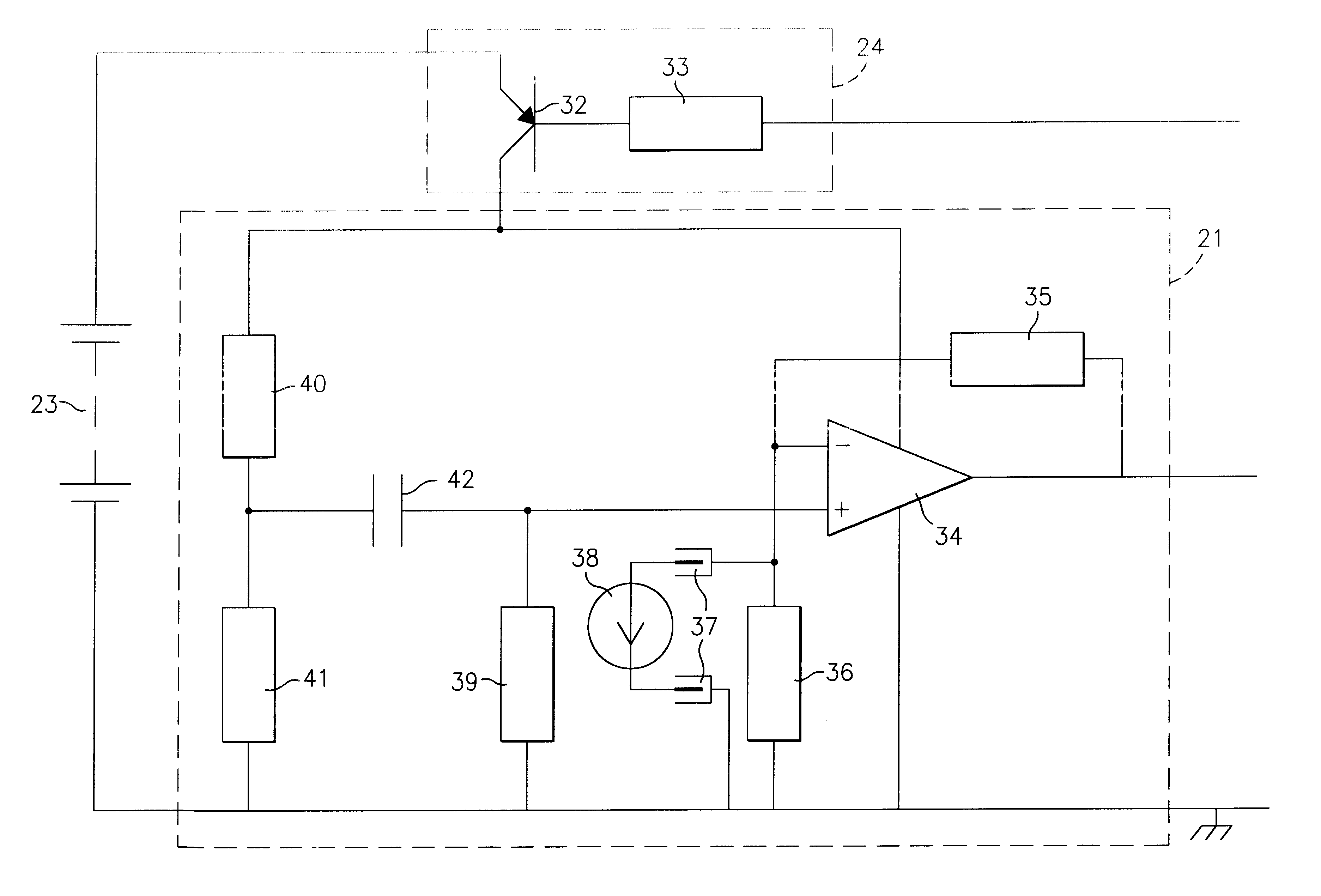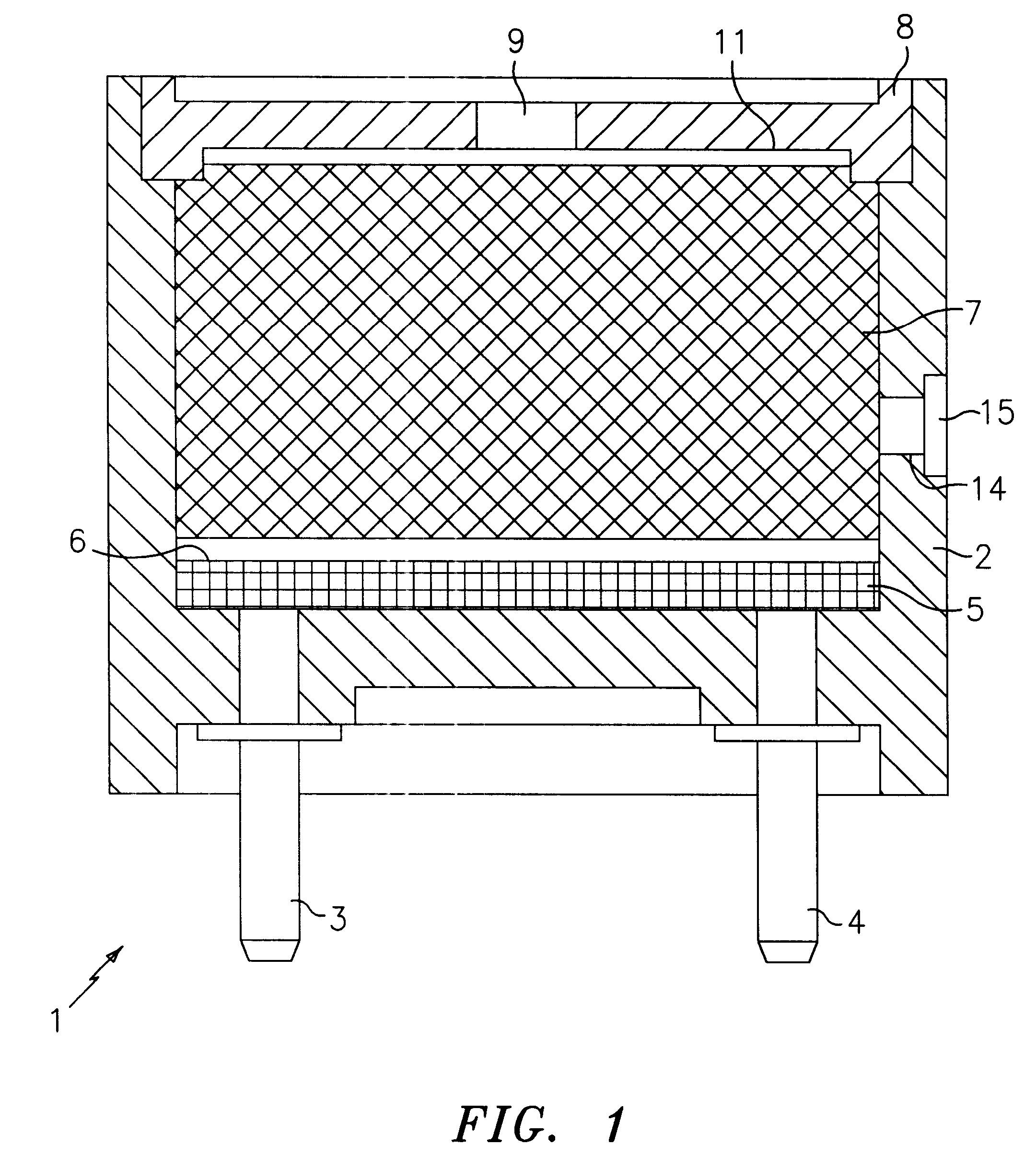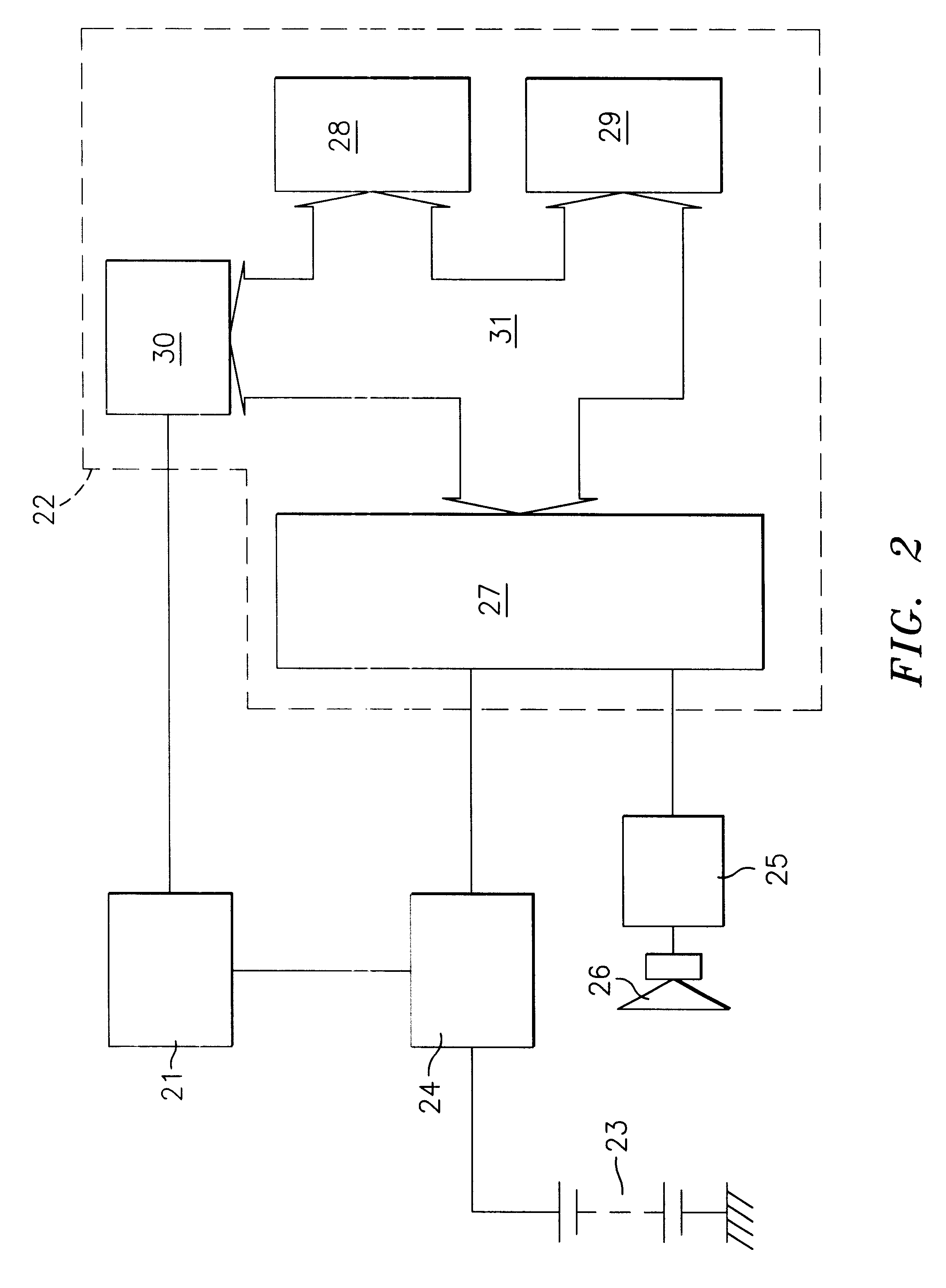Gas detecting apparatus having condition monitoring means
a technology of condition monitoring and gas detection apparatus, which is applied in the field of electrochemical gas sensors, can solve the problems of time-consuming and undesirable, faults in such sensors, and broken signal wires or electrolyte loss
- Summary
- Abstract
- Description
- Claims
- Application Information
AI Technical Summary
Benefits of technology
Problems solved by technology
Method used
Image
Examples
Embodiment Construction
A preferred embodiment of the present invention will now be described, by way of example, with reference to the accompanying drawings.
Referring to FIG. 1, an electrochemical sensor 1 comprises a generally cylindrical cup 2 formed from plastics resin material. First and second contact pins 3, 4 extend through the base of the cup 2. A layer 5 of potting compound is located immediately over the floor of the cup 2. A first electrode structure 6 overlays the potting compound. A wad 7, comprising a roll of glass fibre textile, sits on top of the first electrode structure 6. The wad 7 is soaked in an electrolyte. A disc-shaped cap 8 is dimensioned to plug the open end of the cup 2. The cap 8 has an axial, centrally located hole 9 to allow gas to be sensed to pass into the cup 2. A first wire (not shown) extends from the first contact pin 3 and overlays the first electrode structure 6. A second wire (not shown) extends from the second contact pin 4, up the inside of the cup 2, and between t...
PUM
| Property | Measurement | Unit |
|---|---|---|
| voltage | aaaaa | aaaaa |
| voltage | aaaaa | aaaaa |
| threshold | aaaaa | aaaaa |
Abstract
Description
Claims
Application Information
 Login to View More
Login to View More - R&D
- Intellectual Property
- Life Sciences
- Materials
- Tech Scout
- Unparalleled Data Quality
- Higher Quality Content
- 60% Fewer Hallucinations
Browse by: Latest US Patents, China's latest patents, Technical Efficacy Thesaurus, Application Domain, Technology Topic, Popular Technical Reports.
© 2025 PatSnap. All rights reserved.Legal|Privacy policy|Modern Slavery Act Transparency Statement|Sitemap|About US| Contact US: help@patsnap.com



